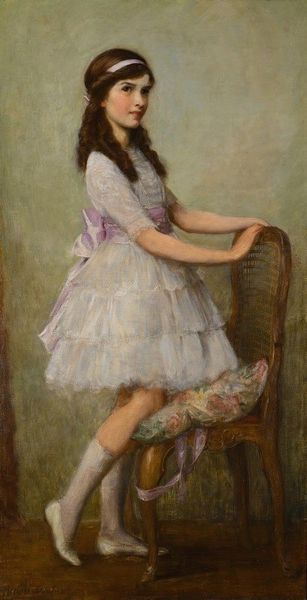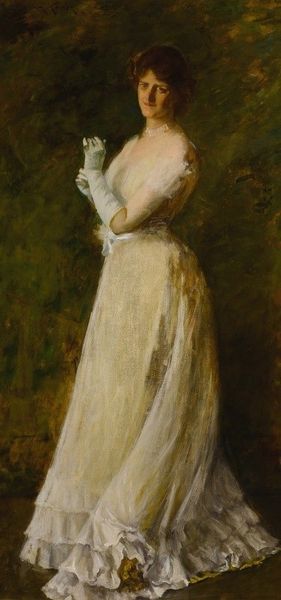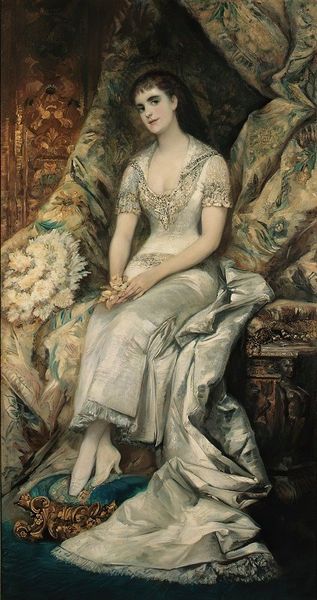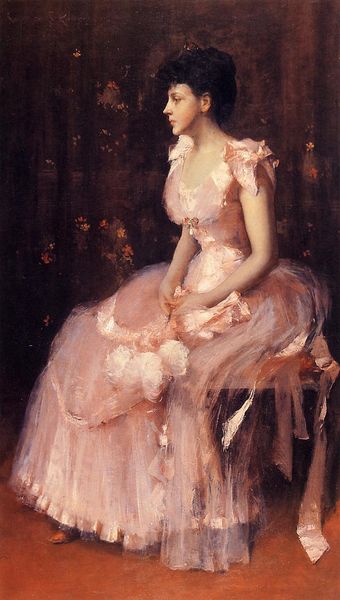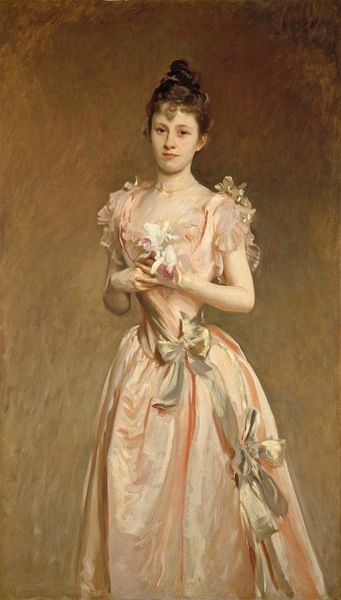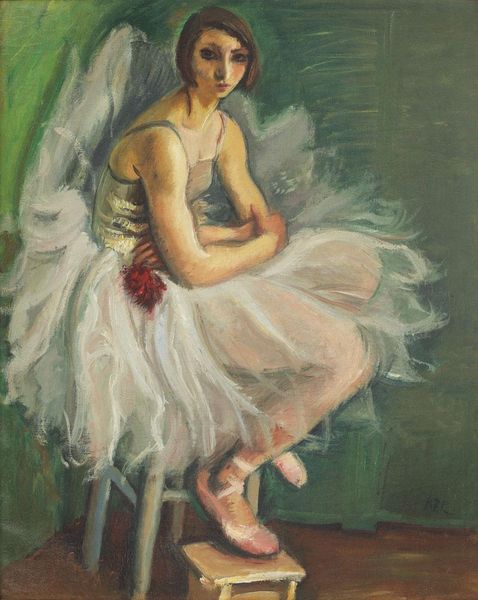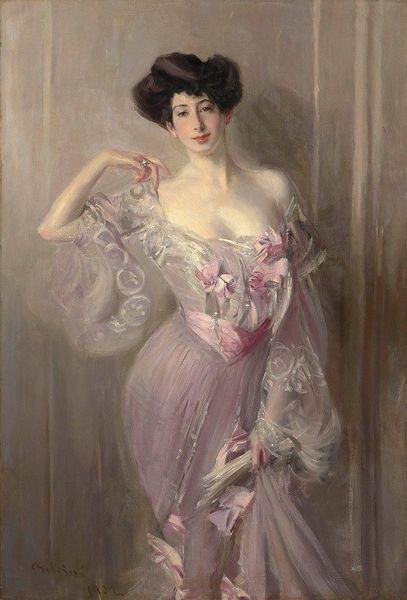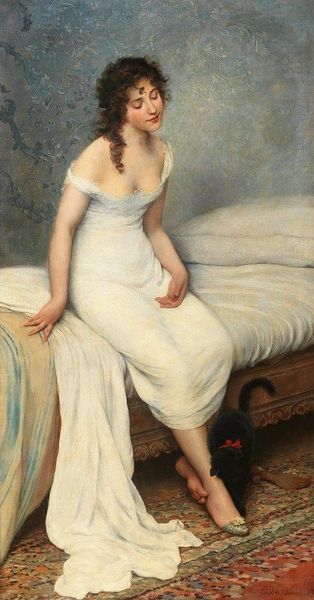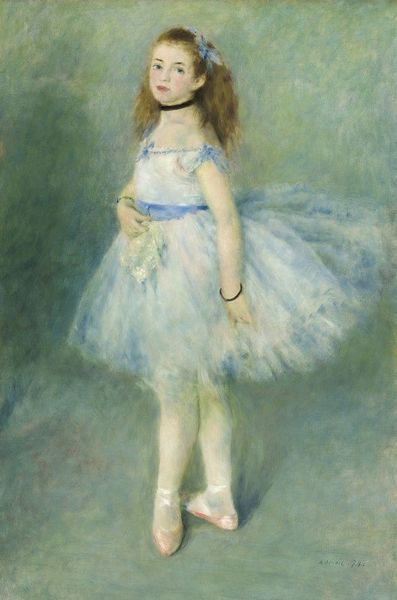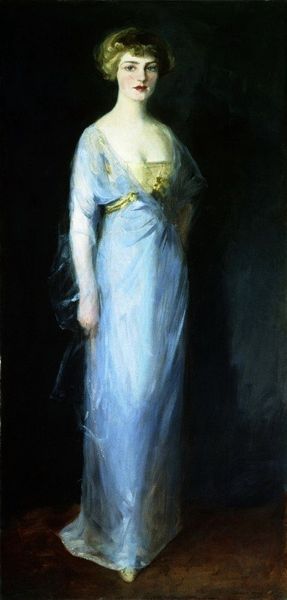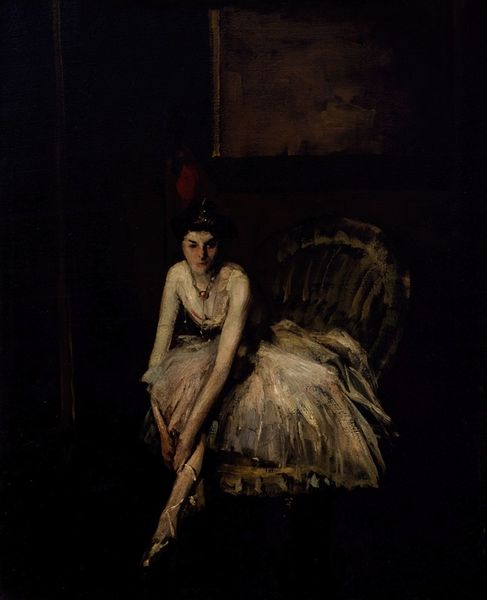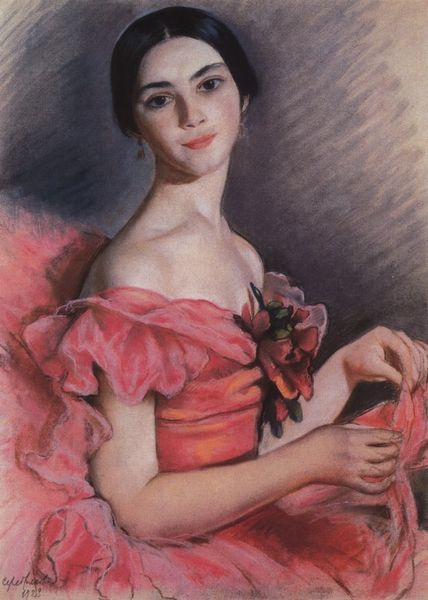
Copyright: Public Domain: Artvee
Curator: This painting, entitled "Ballerina," was created around 1904 by the American Impressionist Frederick Carl Frieseke. Executed in oil, it's a portrait study bathed in soft, diffused light. What strikes you most when you first look at it? Editor: Well, the pose first – a study in studied relaxation, her downcast gaze suggests a moment of introspective vulnerability amid the expected bravado of the stage. It is rather melancholic, don't you think? Curator: It certainly moves beyond simple portraiture. The subject's interiority is palpable, but Frieseke positions the dancer carefully in a transitional space, blurring public performance and private preparation. Given the social history of ballerinas at the turn of the century, we might read her averted gaze as a gesture that pushes back on objectification. What do you make of that interpretation? Editor: That’s insightful! It connects to ongoing discussions within feminist theory surrounding the performative gaze and agency. It asks us to challenge those very portrayals of femininity in painting throughout the Belle Époque. How do we reclaim her story, so to speak, as it has been told by Frieseke? What decisions did Frieseke make with the brush? Curator: We see that through the softness of the brushwork, yes. Frieseke employs impressionistic techniques— broken color, visible brushstrokes—to almost dematerialize the figure, especially the tutu. That challenges conventions within portrayals of young female dancers as innocent and pure. Here the edges of her presence are blurred into the background; she has no crisp, easy-to-digest presence within the composition, which is so important for an artist during the Progressive Era. Editor: Indeed. And, considering the socio-economic factors—ballet dancers coming primarily from the lower classes—that softening could function as an elevation, an attempt to ennoble. It reminds us that representation is never neutral; power dynamics are always at play. The chair upon which she is perched looks quite high. Her gaze downwards at her ballet slippers is such a portrait of everyday femininity within very demanding, structured circumstances. Curator: Absolutely. It forces us to contend with complex readings. We see her fragility, yes, but there is this underlying resistance and strength present. It really encapsulates Frieseke's commitment to imbuing a specific, unique vision with nuance in such an expressive manner. Editor: Indeed. There is still so much to unpack from the era that informs our contemporary perspective. Curator: It challenges, certainly, as all meaningful art should!
Comments
No comments
Be the first to comment and join the conversation on the ultimate creative platform.
